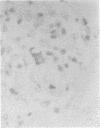Abstract
AIMS: To determine the variation in practice of British renal histopathologists in the use of immunohistochemistry and electron microscopy in the investigation of renal biopsy specimens; to attempt to identify a consensus on what acceptable practice should be; and to satisfy requests from laboratories which have found immunoperoxidase methods unreliable on renal biopsy specimens, by disseminating methods from laboratories which have had success. METHODS: A questionnaire was sent to all 58 laboratories which participate in the UK National Renal Pathology External Quality Assessment Scheme. RESULTS: A response rate of 88% was achieved. Most laboratories use immunocytochemistry and electron microscopy to investigate most renal biopsy specimens, but a few use these methods only rarely and one, never. There is a widespread wish to switch from immunofluorescence to immunoperoxidase, but this is frustrated by the unreliability of the method. This seems to be mainly because of the need to tailor the time of enzyme pretreatment to each biopsy specimen. CONCLUSIONS: The majority view is that electron microscopy and immunocytochemistry are necessary in the investigation of most native renal biopsy specimens, and the few pathologists who report renal biopsy specimens without these methods risk accusations of negligence. Difficulty in using fixed renal tissues for immunocytochemistry stem largely from variations in the requirement for enzyme pre-digestion. Even where immunoperoxidase methods are usually successful, the occasional use of immunofluorescence in parallel to check that false negatives are not occurring is advocated. In all cases it is wise to keep some frozen cortex in reserve in case there is an unexpected or inconsistent immunoperoxidase result.
Full text
PDF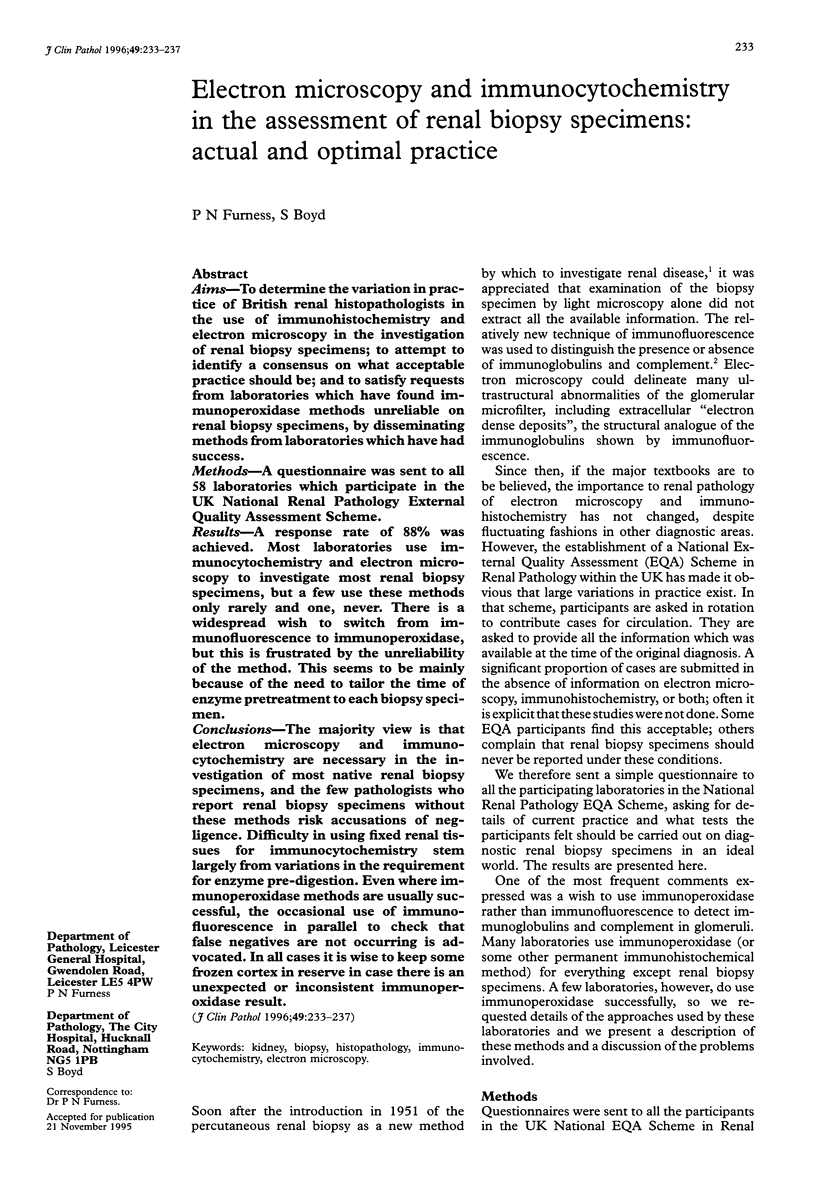
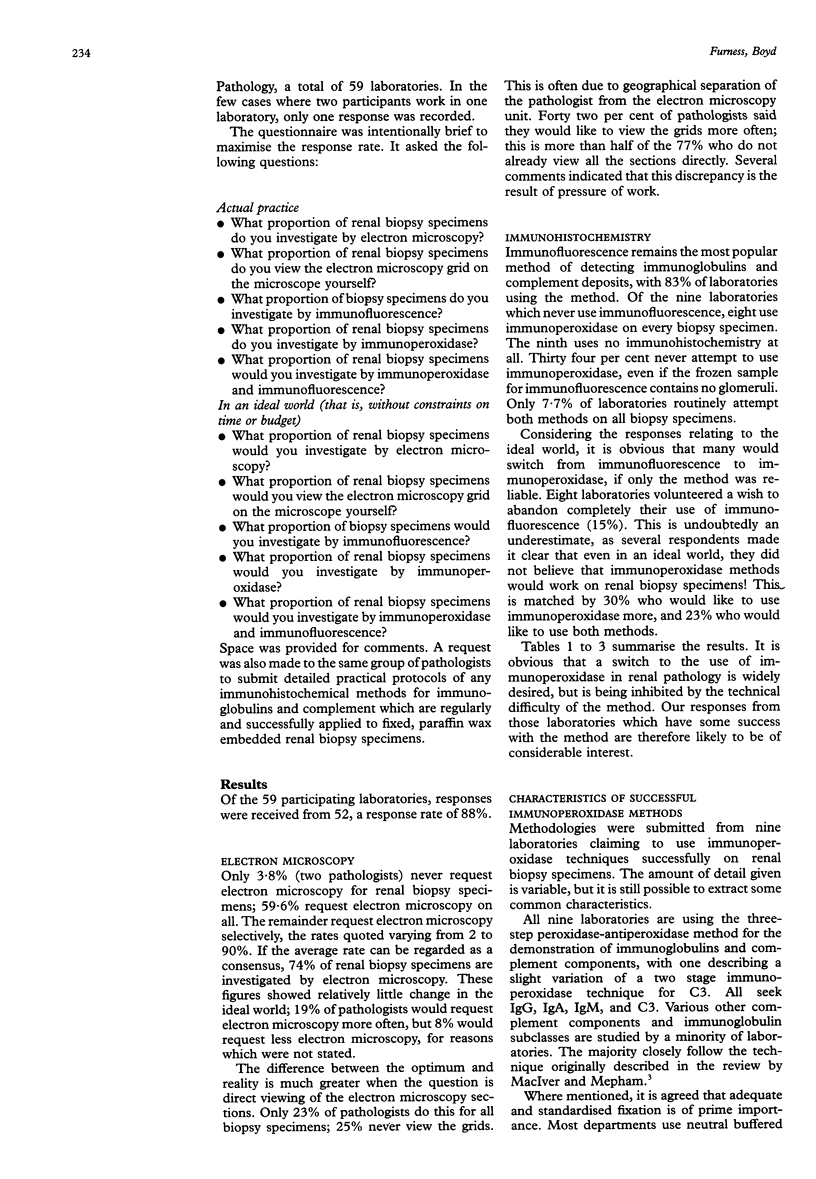
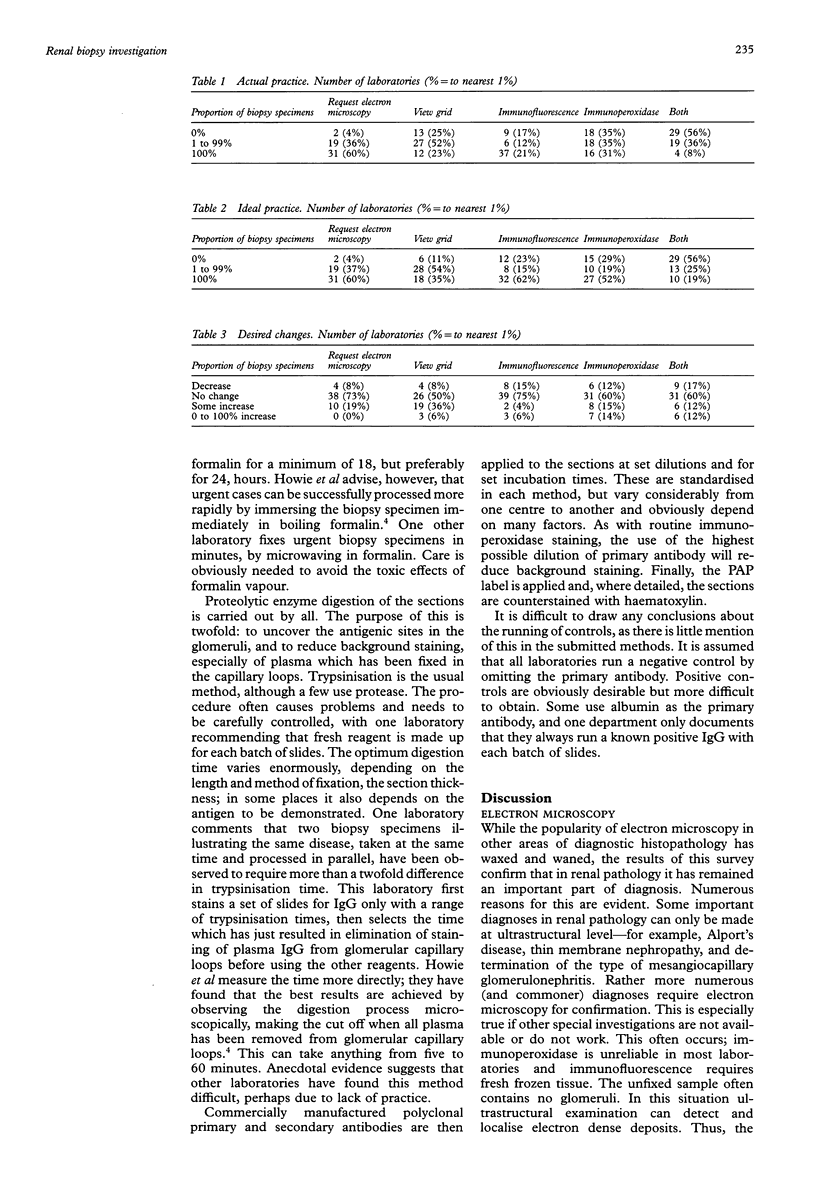
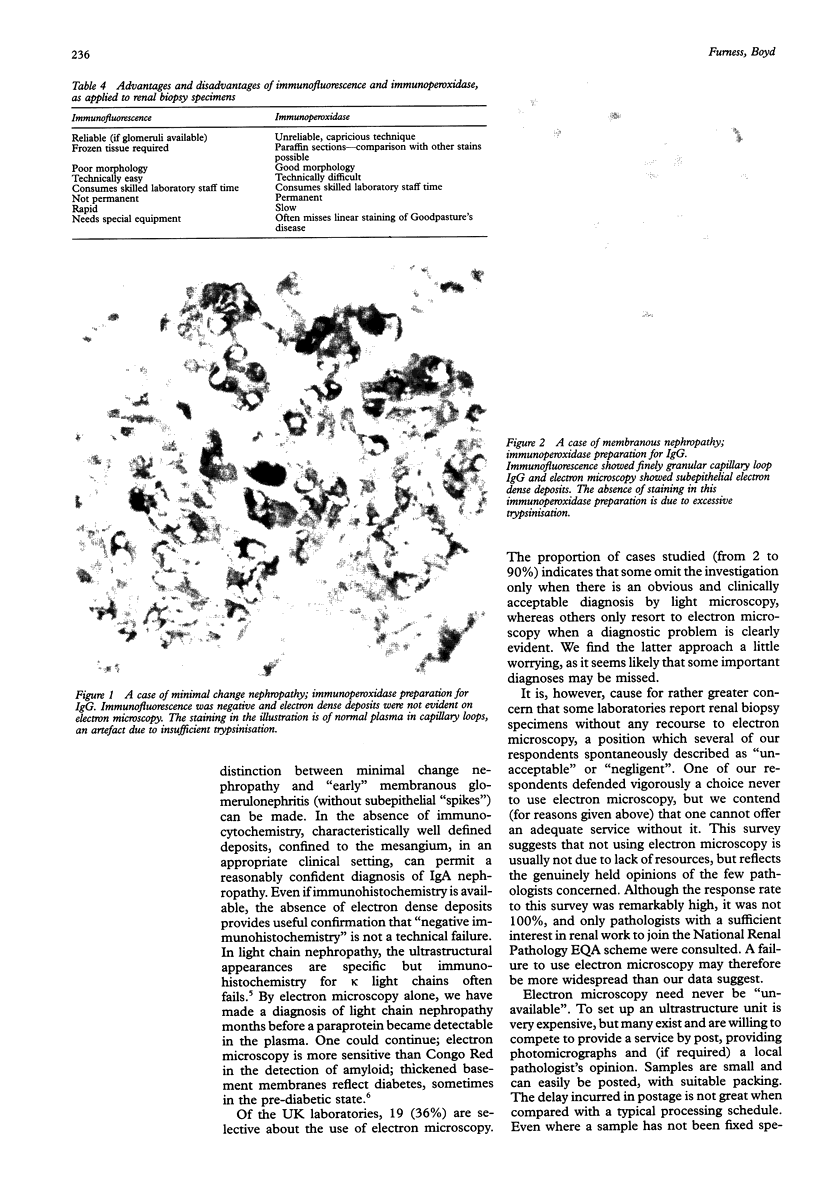
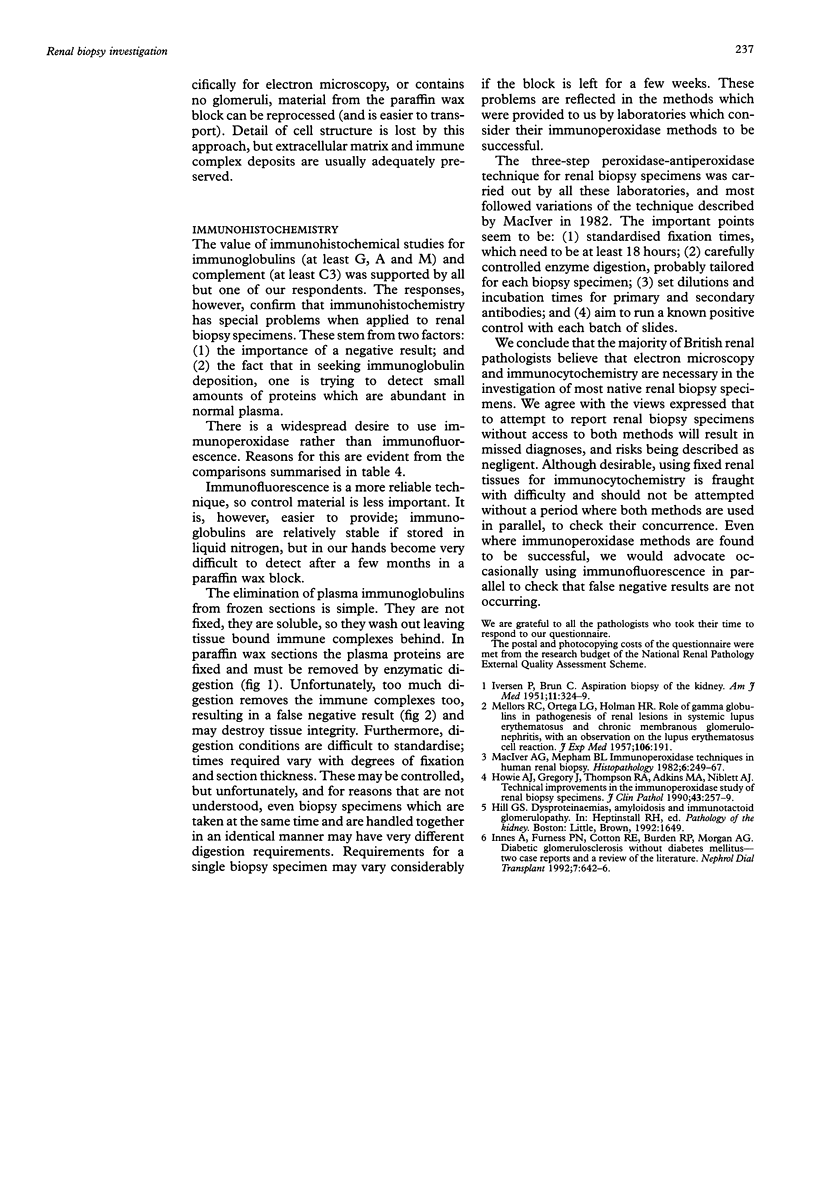
Images in this article
Selected References
These references are in PubMed. This may not be the complete list of references from this article.
- Howie A. J., Gregory J., Thompson R. A., Adkins M. A., Niblett A. J. Technical improvements in the immunoperoxidase study of renal biopsy specimens. J Clin Pathol. 1990 Mar;43(3):257–259. doi: 10.1136/jcp.43.3.257. [DOI] [PMC free article] [PubMed] [Google Scholar]
- IVERSEN P., BRUN C. Aspiration biopsy of the kidney. Am J Med. 1951 Sep;11(3):324–330. doi: 10.1016/0002-9343(51)90169-6. [DOI] [PubMed] [Google Scholar]
- Innes A., Furness P. N., Cotton R. E., Burden R. P., Morgan A. G. Diabetic glomerulosclerosis without diabetes mellitus--two case reports and a review of the literature. Nephrol Dial Transplant. 1992;7(7):642–646. doi: 10.1093/ndt/7.7.642. [DOI] [PubMed] [Google Scholar]
- MELLORS R. C., ORTEGA L. G., HOLMAN H. R. Role of gamma globulins in pathogenesis of renal lesions in systemic lupus erythematosus and chronic membranous glomerulonephritis, with an observation on the lupus erythematosus cell reaction. J Exp Med. 1957 Aug 1;106(2):191–202. doi: 10.1084/jem.106.2.191. [DOI] [PMC free article] [PubMed] [Google Scholar]
- MacIver A. G., Mepham B. L. Immunoperoxidase techniques in human renal biopsy. Histopathology. 1982 May;6(3):249–267. doi: 10.1111/j.1365-2559.1982.tb02721.x. [DOI] [PubMed] [Google Scholar]



